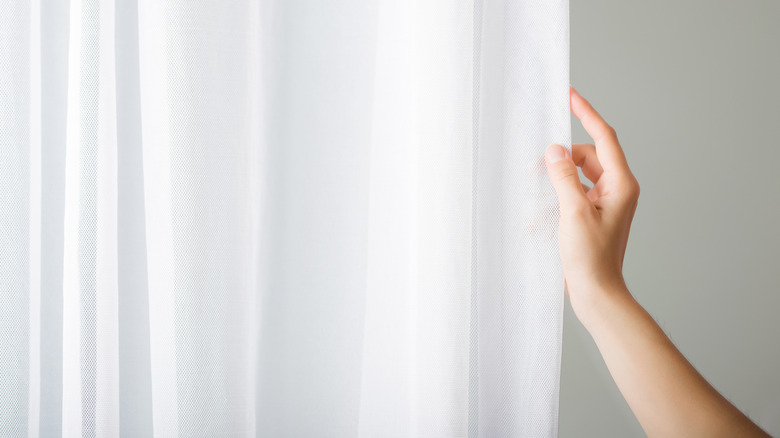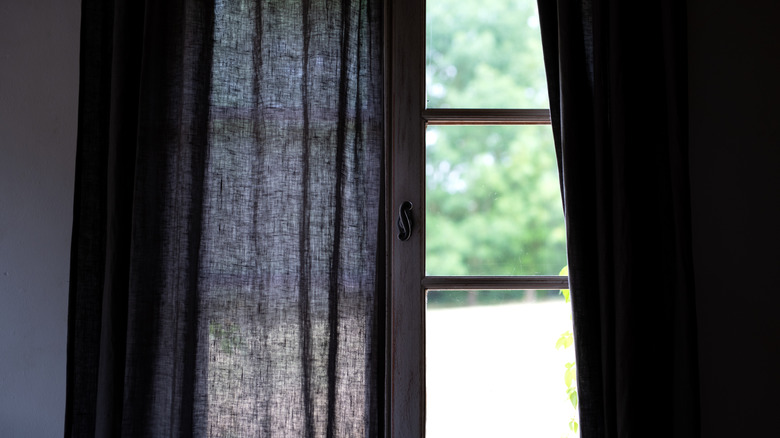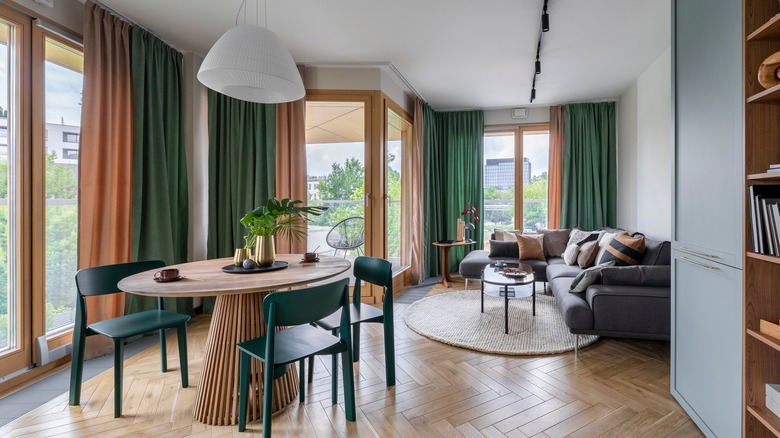The Overlooked Curtain Mistake That Will Make Your Home Look Cheap
When it comes to window treatments, the difference between looking cheap and classy is a very thin line — or we should say a very thin lining. Unlined curtains tend to look cheap, wrinkly, and rushed as if you've just bought them at the dollar store and tossed them up without paying attention to their effect on your interior design. Even if that's exactly what you did, there's a way to make affordable window coverings look more thoughtful and luxurious. A simple curtain lining is all you need to protect the fabric, block out unwanted light, insulate your home, and elevate the appearance of the whole room.
Of course, not all curtains come with a built-in lining, and it can be hard to recognize good quality when you aren't sure what to look for. How can a simple layer of fabric really impact your interior design? And what can you do to remedy thin, unlined curtains? Here's how to transform your drapes from cheap to chic in no time.
Unlined curtains look and feel cheap
One of the primary functions of drapes is to block out sunlight, so they look cheap when they don't. Unless your curtains were intentionally designed to be sheer, flecks of light peeking through the stitches is a telltale sign of low-quality window treatments. On the other hand, lined drapes add a slight amount of bulk and heft that looks and feel like higher quality. Lined drapes also look much nicer from the outside of your home, where the clean-cut lining prevents you from seeing the backside of the pattern.
But a curtain liner serves much more than just an aesthetic purpose; a lining is also important to protect the face of the decorative fabric from sun damage. While it might be thin, the simple extra layer can even prolong the life of your drapes by up to 10 or 15 years. High-quality, light-blocking drapes are an important investment to protect carpets and furniture as well, keeping them from fading in the sun.
Simple fixes make a big difference
Investing in a set of high-quality, lined curtains is a wise choice for aesthetics and design longevity, but if you aren't ready to pour money into your window treatments, you can try a few other DIY methods to make cheap drapes look more expensive. The first option is to sew your own lining onto the back of the decorative curtains. To do so, measure your curtains or take the packaging with dimensions to your local fabric store and purchase enough fabric to cover the back, with some room for seam allowance. A cream or ecru fabric will look best from the outside, but you can use any neutral color that appeals to you. Sew the lining with a straight stitch around the edges and iron the curtains before re-hanging them.
Alternatively, you can hang a second or third set of semi-sheer curtains behind the fancy decorative layer. This extra layer will mimic a lining in many ways, and they even give you the option to let filtered light into the room. If you prefer the unlined, airy look, reach for durable linen curtains in the summer, and swap out for thick drapes in winter to protect furniture from the low-hanging sun. Some other important touches to note are the height and width of your curtains. Make sure they reach within a few inches of the ceiling and the floor, and opt for sleek, seamless wall attachments if possible.


